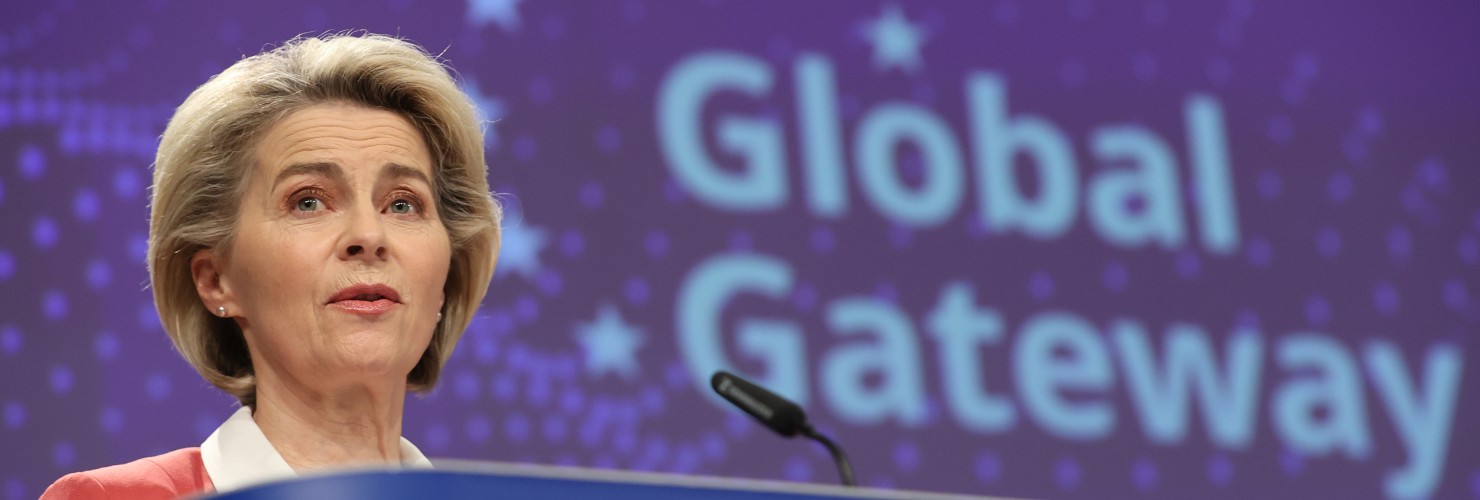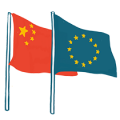

Global Gateway: playing “catch-up” with China or a chance for change?
The recently unveiled Global Gateway (GG) initiative is the EU’s newest attempt to boost its connectivity policies. Its previous major connectivity endeavor, the 2018 EU Asia Connectivity Strategy, aimed at connecting the EU and Asia, never took off. The Global Gateway with wider reaching ambitions is a fresh chance for the EU to be more successful in bringing tangible results.
The fact is a lot has changed since 2018. Connectivity strategies are now embedded in a new geopolitical landscape, opportune for the Global Gateway which is already off to a better start. The new strategy has the potential to drive the new geopolitical agenda of Ursula von der Leyen’s European Commission, an ambition missing in her predecessor Jean-Claude Junker’s agenda. It benefits from political momentum and the promise of increased financing for supply chain diversification and strategic autonomy. Beyond traditional connectivity which focuses on infrastructure, the initiative provides a framework to strengthen global partnerships that would contribute to the EU’s developmental and geopolitical goals.
The Global Gateway joins already existing connectivity initiatives such as the Chinese Belt and Road Initiative (BRI) and the US-led Build Back Better World (B3W) which aims to improve global connectivity, among other goals. The latter has met serious obstacles in the US, where the budget approval remains on hold. As a result, the European initiative could form a broader connectivity network that has the potential to bring to substantial results on a global scale.
The future success of the Global Gateway is, however, far from guaranteed. Over the next few years, the initiative will face numerous challenges that may hinder its success.
Momentum along the BRI
One main challenge will be overzealous competition with the BRI. The sense of urgency around the Global Gateway is primarily linked to a shift in the assessment of China and the influence of the BRI. It’s prompted the EU to revamp its connectivity offer in and outside its borders. Competition with China may have built the necessary political momentum but too much focus on rivalry would risk turning the Global Gateway into a game of “catch up” with China. A move that may overstretch the GG and result in rushed projects.
At its core the Global Gateway should prioritize recipients’ expectations while promoting the EU’s values and interests, and not evaluate whether it is able to hold its own against BRI projects. In practical terms, that means an initial coherent implementation of a few concrete projects. And that requires time. After the EU-US dialogue on China, Stefano Sannino, Secretary General of the EU External Action Service referred to roll-out happening “rapidly.” Rapid and well-executed rarely go hand-in-hand. There is still a great need for connectivity projects in the world, certainly success will come to those that prioritize well-planned implementation.
Financing Global Gateway
The Commission will fund projects between 2022 and 2027 with EUR 300 billion. The funds will not come entirely from the European Commission’s multi-annual financial framework but in a rather European fashion, Brussels aims to incentivize private or public investors to match funds. The plan is to first increase the funding capacity of the Global Gateway and then to involve local stakeholders in the project thereby ensuring interest from local communities. This in turn would contribute to local growth, a merit of a truly global connectivity strategy.
Despite the incentives a co-founder like the EU can create for other investors, finding proper and reliable matching investors will be a challenge. Moreover, collaboration with local entities looks good on paper, but often the differences in approaches mean that the EU will have to devote plenty of energy and time in trying to understand and then navigate local realities. An appropriate inclusion of locals is yet another point that speaks for a slow and limited initial implementation of GG that should include only a handful of considered projects.
Opportunities for collaboration
The first months of 2022 already set out several opportunities for collaboration with the Global Gateway and it will be a relevant topic as we enter the new year.
Africa is most likely going to be a key region for the initiative and the EU-Africa summit scheduled for February will be an ideal platform to foster collaboration with African governments. A similar approach could be adopted for the EU-India summit, building upon the EU-India Connectivity Partnership and, in light of potentially closer relations between the two, in the framework of the EU’s engagement in the Indo-Pacific.
The EU could coordinate and collaborate with other actors running connectivity projects in the Indo-Pacific region, such as the US and Japan. Collaboration with other connectivity projects would lower the risk of overstretching the initiative’s capacity and increase the overall number of projects and countries where the EU is involved in successful connectivity projects, therefore increasing the EU’s geopolitical outreach.
While collaboration with the BRI is not excluded a priori, the accent of the Global Gateway on values, environment and high-quality standards might place a limit on collaboration with the Chinese connectivity initiative. Although China has pledged to turn the BRI green and increase quality standards, differences with the European vision are likely to hinder collaboration, which however should not be excluded.
A long road ahead
All in all, the Global Gateway is a promising initiative that has the potential to be highly successful if the EU manages the following: focus its attention on a limited number of projects and see them through, escape the trap of wanting to do everything as soon as possible, involve local actors and use the Global Gateway to provide a framework to the numerous already existing European connectivity projects.


